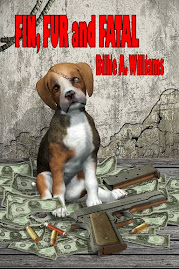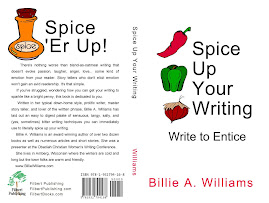When it comes to people, authors study character, look for characters, and combine what they see into new characters. Sometimes. Sometimes a character pops into your life full blown, perhaps only a memory of an earlier time created him or her--and maybe you embellished what was real and what was not. But if a person/character resonates with you, certainly your readers will "feel" that special knowing you impart to them.
I knew such a character, not personally but from afar. She became the focus of Death by Candlelight and
Candlelight and Shadows, two mystery novels. She was nothing but a girl walking across a weedy field between an apartment building, railroad tracks and a street where stores were. Tall moccasin boots and long rich brown hair, a fringed leather jacket and blue jeans. She fascinated me. I had to know her. So what did I do? I interviewed her and she came alive so that I could tell her story. Actually, the interview was me talking to the character in my head - the answers felt real. That's all it takes sometimes for an author to create a person that her cover artist can find the essence of and translate to the page for both author and reader.
There are other characters: Piano Man (he was a man in a panel of wood-grain paneling in a rented home. I saw his picture there, I saw it as an advertisement for an artist course....I knew I had to find out more about him--Ghost Music of Vaudeville brought him to the page and to life. I hope readers will feel how special he is.
I could go on, but you get the idea. You can create composites of several people - or just go with your imagination, let them tell you who they are.
Now for more on this same subject visit Ginger Simpson at her blog - and follow along on a discovery of where our characters come from. Ginger Simpson http://cowboykisses.blogspot.com
And if you missed any, here are the other blogs where you will find more authors sharing with you, please stop by and visit them too.
Thanks for visiting - happy reading!
Lynn Crain -- www.awriterinvienna.blogspot.com.
Connie Vines -- http://connievines.blogspot.com
Beverley Bateman http://beverleybateman.blogspot.ca/
Billie A. Williams http://printedwords.blogspot.com
Ginger Simpson http://cowboykisses.blogspot.com
Margaret Tanner http://wattleglen-margarettannersblog.blogspot.com.au/
Diane Bator http://dbator.blogspot.ca/
Rita Karnopp http://mizging.blogspot.com
Rhobin Courtright http://www.rhobinleecourtright.com/
I knew such a character, not personally but from afar. She became the focus of Death by Candlelight and
There are other characters: Piano Man (he was a man in a panel of wood-grain paneling in a rented home. I saw his picture there, I saw it as an advertisement for an artist course....I knew I had to find out more about him--Ghost Music of Vaudeville brought him to the page and to life. I hope readers will feel how special he is.
I could go on, but you get the idea. You can create composites of several people - or just go with your imagination, let them tell you who they are.
Now for more on this same subject visit Ginger Simpson at her blog - and follow along on a discovery of where our characters come from. Ginger Simpson http://cowboykisses.blogspot.com
And if you missed any, here are the other blogs where you will find more authors sharing with you, please stop by and visit them too.
Thanks for visiting - happy reading!
Lynn Crain -- www.awriterinvienna.blogspot.com.
Connie Vines -- http://connievines.blogspot.com
Beverley Bateman http://beverleybateman.blogspot.ca/
Billie A. Williams http://printedwords.blogspot.com
Ginger Simpson http://cowboykisses.blogspot.com
Margaret Tanner http://wattleglen-margarettannersblog.blogspot.com.au/
Diane Bator http://dbator.blogspot.ca/
Rita Karnopp http://mizging.blogspot.com
Rhobin Courtright http://www.rhobinleecourtright.com/















